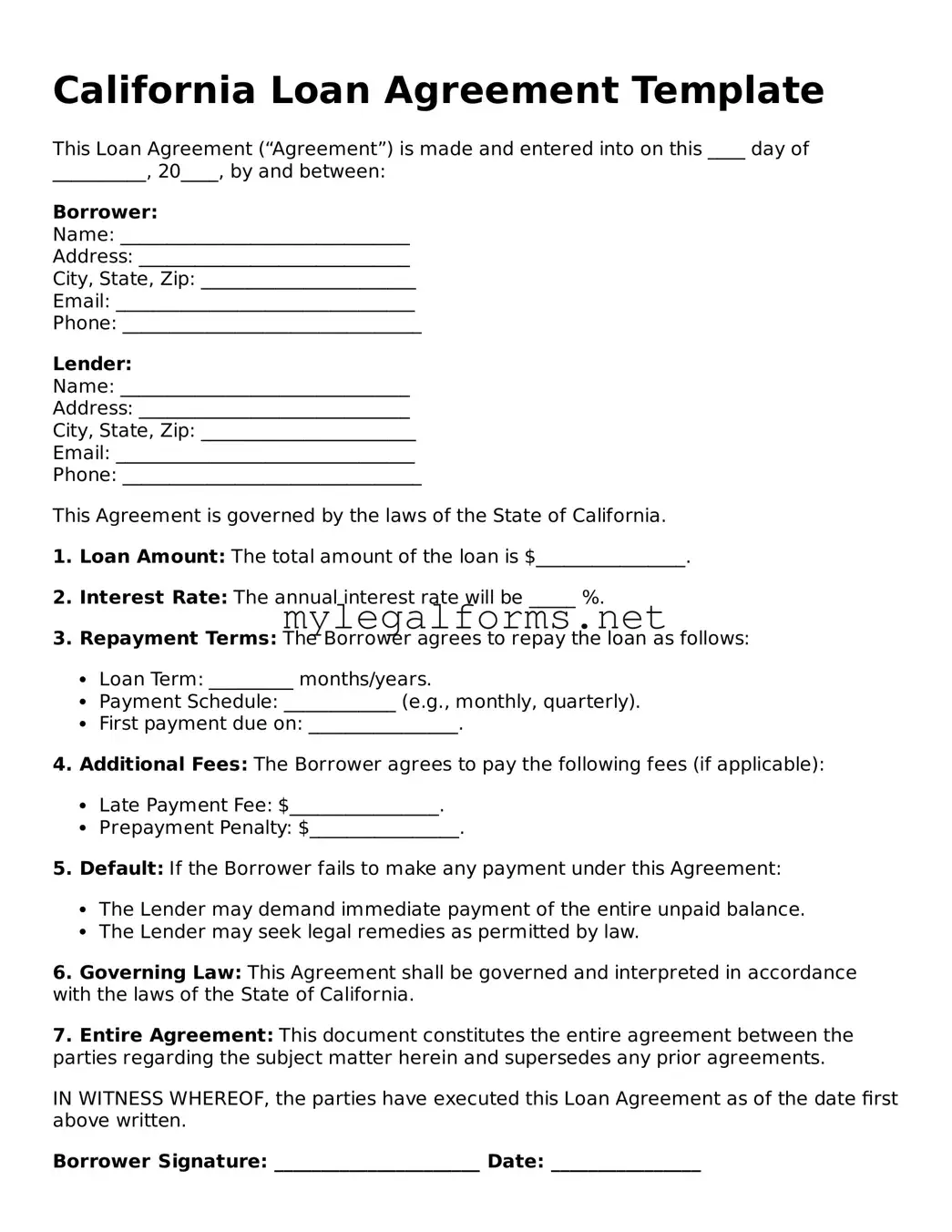California Loan Agreement Template
This Loan Agreement (“Agreement”) is made and entered into on this ____ day of __________, 20____, by and between:
Borrower:
Name: _______________________________
Address: _____________________________
City, State, Zip: _______________________
Email: ________________________________
Phone: ________________________________
Lender:
Name: _______________________________
Address: _____________________________
City, State, Zip: _______________________
Email: ________________________________
Phone: ________________________________
This Agreement is governed by the laws of the State of California.
1. Loan Amount: The total amount of the loan is $________________.
2. Interest Rate: The annual interest rate will be _____ %.
3. Repayment Terms: The Borrower agrees to repay the loan as follows:
- Loan Term: _________ months/years.
- Payment Schedule: ____________ (e.g., monthly, quarterly).
- First payment due on: ________________.
4. Additional Fees: The Borrower agrees to pay the following fees (if applicable):
- Late Payment Fee: $________________.
- Prepayment Penalty: $________________.
5. Default: If the Borrower fails to make any payment under this Agreement:
- The Lender may demand immediate payment of the entire unpaid balance.
- The Lender may seek legal remedies as permitted by law.
6. Governing Law: This Agreement shall be governed and interpreted in accordance with the laws of the State of California.
7. Entire Agreement: This document constitutes the entire agreement between the parties regarding the subject matter herein and supersedes any prior agreements.
IN WITNESS WHEREOF, the parties have executed this Loan Agreement as of the date first above written.
Borrower Signature: ______________________ Date: ________________
Lender Signature: ______________________ Date: ________________
